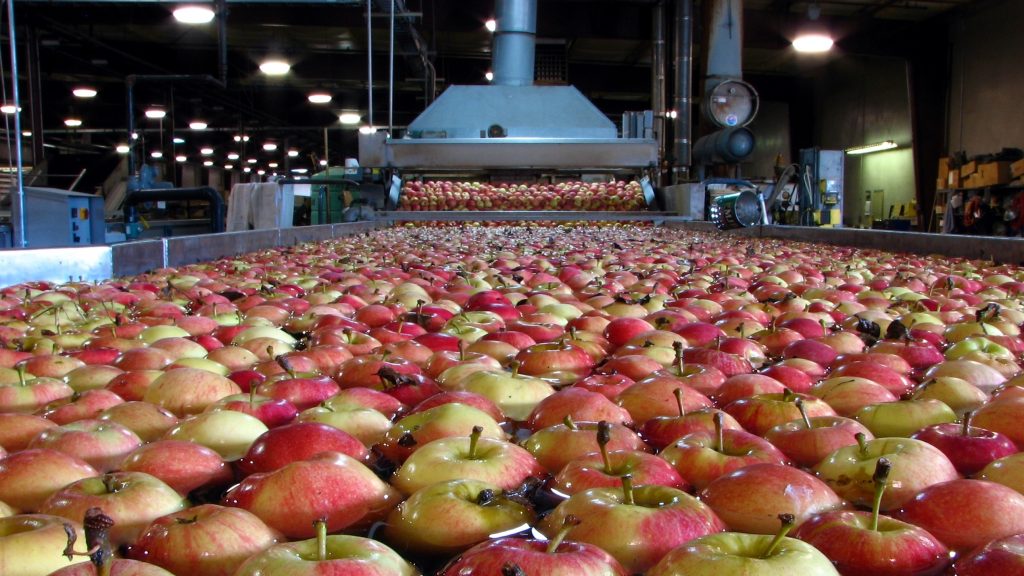
How washing water affects food safety
Food contamination can occur anywhere in the food supply chain. Contamination can very easily occur at the start of the supply chain, during washing, for example. Further along the chain, there are several risks, too. Food being unloaded on a hot day might reach a temperature at which bacteria grow. The food processing industry can counter this by also ensuring that equipment design, material choices and the layout of infrastructure, equipment and processing facilities are conducive to safety and hygiene.
Washing fruit and vegetables using water helps remove bacteria such as E.coli, listeria and salmonella, as well as spores of fungi and mould and traces of pesticides from the surface. However, if not properly managed, this process can actually increase risk levels. Contaminants on the surface of produce continue to propagate during and after transport. If contaminated water is used to clean this produce, or antibacterial treatment is inadequate, any contamination can very easily spread to huge numbers of fruits or vegetables. This, in turn, can mean destruction of large batches of produce, shortened shelf life, or the spread of crop diseases.
According to the World Health Organization (WHO), illness resulting from contaminated food is one of today’s most widespread health problems. The WHO points out that safe water is just as important for food preparation as it is for drinking. EU legislation also stipulates that recycled water used in food processing should be of the same standard as drinking water – unless the competent authority is satisfied that the quality of the water cannot affect the wholesomeness of the foodstuff in its finished form.
This makes water recycling and reuse in this industry particularly challenging. Reuse water in food processing should be safe for its intended use, should not adversely affect product suitability, and may not introduce of chemical, microbiological or physical contaminants in amounts that represent a health risk to the consumer. Water treatment must be undertaken with knowledge of the types of contaminants the water. The UN Food and Agriculture organisation states that water recirculated for reuse should be treated and maintained in such a condition that no risk to the safety and suitability of food results from its use and the treatment process should be effectively monitored.
But why re-use process water in the first place? For one thing, it’s cost effective. What’s more, there are several environmental benefits. The water only needs to be filtered once and reuse reduces – or even eliminates – wash water discharge to the environment. In short: replacing all process water every time a new batch needs to washed is costly and inefficient. Cleaning and recycling this water is a smarter approach – but only if you can rest assured there’s no way that recycled water can contribute to contamination.
Benefits of recycling water
Washing fruits and vegetables is one of the most important processing steps at the industrial level, which not only improves food safety and quality, but also the product’s shelf-life. Less produce is wasted and, importantly, chain partner and customer trust and satisfaction improve. However, there are several factors that need to be taken into account. The entire process needs to be managed in a way that not only ensures microbes and spores are removed, but is also consistent with environmental stewardship and ensures compliance with local food safety and environmental regulations.
VAM helps you achieve all of these goals and more by ensuring all produce is cleaned using recycled process water. Our multi-stage purification removes bacteria and pesticides and results in a 95% saving on process water as well as cleaner washing lines and production environments. Get in touch with VAM to find out more or discuss your own requirements!
Hans Blaak
phone: +31 (0) 113 – 65 58 80
email: hb@vam-watertech.com
or use our contact form.
